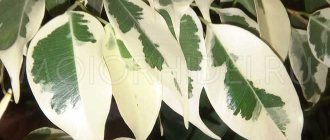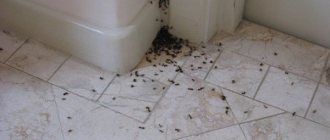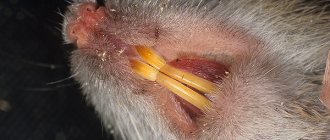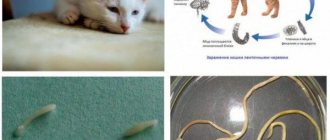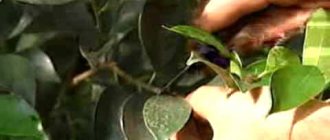Pepper can begin to get rid of future fruits at any stage of their development - the appearance of buds, flowering and the formation of ovaries. Sometimes this problem becomes widespread. What should you pay attention to in such a situation and how to correct it?
First, take a good look at the plants. If they have only dropped a couple of flowers or ovaries, then there is nothing much to worry about. But if the buds on a bush are dropped en masse or even dry out, you should be wary. This means that some of the conditions are categorically not suitable for the nightshade culture, and it uses this simple way to inform you about it. Let's consider all the reasons for what is happening - harmless and not so.
"Extra" buds of pepper
Any cultivated plant leaves itself such a number of ovaries that its root system is able to feed it. Therefore, the fall of a small amount is quite acceptable and there is no need to panic. Some gardeners even recommend picking off the first buds of the pepper themselves, so that the root system of the bush is strengthened and subsequently it grows new healthy ovaries. However, if you are not a supporter of such methods, trust the plants themselves. Believe me, they will throw off everything that bothers them.
The situation takes a different turn when the fall of buds becomes global.
Signs of a problem
The falling of flowers and ovaries of pepper is a problem for many summer residents, which can manifest itself at various stages of plant growth. It is very important to identify the problem in a timely manner, otherwise you can lose a significant part of the harvest.
Signs of a problem may vary:
- weak and frail foliage;
- blanching and dullness of pepper leaves;
- thin and weak root system;
- the appearance of dark or yellow spots, dots or thin cobwebs on the leaf blades.
Pepper ovaries and flowers can fall off even in a healthy plant with a well-developed root system and aerial parts. Most often, the cause of this problem is stress after transplantation to a permanent place, unfavorable weather conditions, and lack of lighting.
Pepper has a large number of stepsons
Like another nightshade crop - tomatoes - the shoots of peppers must be removed. Only bushes of determinate varieties can avoid this fate, which inactively form stepchildren, and no more than 10 ovaries are “thrown away” on the main branches. In other cases, pinching pepper is considered one of the mandatory procedures. In addition to the stepsons, you also need to remove the “crown” flowers remaining on the plant - those that form on the fork of the main shoot.
- How and why to plant peppers
Understanding the formation of peppers is very simple. You just have to carefully examine the bushes.
Improper soil fertilization
On infertile land, the fruits will not please you with either quality or quantity, because then defective ovaries are formed. They cannot survive for long: the plant discards them. That's why peppers need soil rich in nutrients.
The nitrogen content in the soil is especially important. Its deficiency leads to slow growth of vegetative organs. Excess leads to too much growth of green mass to the detriment of the development of ovaries, which significantly reduces the number of fruits on the bush. This may even cause the ovaries to fall off.
During the growing season, peppers must be fed with nitrogen-containing fertilizers in strictly defined doses. If an overdose does occur, stop feeding for an average of 2 weeks.
Temperature changes when growing peppers
In the second half of summer, the daytime temperature still holds its own, but at night your bushes may be cool. This applies to both air and ground temperatures. As a result, you may observe curling of pepper leaves, as well as loss of ovaries by the plant. To correct the situation, reduce the difference between day and night temperatures: ventilate the plantings during the day and place containers of water near them, and on cool nights, completely close the greenhouse or install an automatic ventilation system there. In open ground, cover plants at night. Mulch the soil under the plants, but renew the layer of mulch every 3-4 weeks.
- 10 mistakes you make when mulching
An agrotechnical practice such as mulching, which is beneficial for soil and plants, can be harmful if mistakes are made when performing it.
Pests
If pepper flowers fall off, inspect the bushes. This reaction of plants may be caused by spider mites or whiteflies. A sign of a mite is the presence of cobwebs on the leaves. Whiteflies are small butterflies with white wings.
In the fight against spider mites, you can use both folk and store-bought remedies. From folk soaps, a solution of laundry soap is isolated, which is used to treat all areas of the crop. They buy the drug Actelik in stores. It is used according to the attached instructions.
It is good to use garlic infusion against whiteflies. To prepare it, take 150-170 g of crushed product and add 1 liter of water, leave for 5 days. For treatment, it is enough to dilute 6 g of the product in 1 liter of water. Among the chemicals you can use Actelik, Confidor.
Irregular watering of peppers
Peppers can drop buds both from underwatering and from overwatering. At the root of the plant, water 1-2 times a week with warm water at the rate of 15-20 liters per 1 sq.m. In this case, the soil under the bushes should be moistened to a depth of at least 25-30 cm. However, if the temperature outside the window does not reach 15°C, watering should be suspended to avoid some crop diseases.
It is also important to follow the general rules for watering plants: water the plants in the morning (before the sun) or in the evening (after it). The ideal solution to the problem is drip irrigation.
- There is a question: why is drip irrigation needed on the site?
Drip irrigation systems are on the agenda. Do they make sense if we are talking about an ordinary summer cottage?
Preventive measures
Prevention of potential problems begins with cleaning the greenhouse, disinfection and proper soil preparation .
With annual use, greenhouse soil becomes depleted and pathogenic organisms appear in it. In cold climates, the soil in the greenhouse freezes in winter, thereby getting rid of pathogens naturally.
In warm climates, chemicals are used to till the soil . It is better to use less toxic chemical or biological preparations: a solution of potassium permanganate, a solution of soda, salt and iodine (1:1:1).
In the spring, before planting, the soil is warmed up in a closed greenhouse for two weeks, after which it is filled with humus and complex mineral fertilizers. It is better to apply manure in the fall.
Lack of lighting when growing peppers
Experts say that pepper lighting is closely related to the air temperature outside the window. So, in hot weather (about 30°C) the luminous flux should be bright. But in cloudy weather in summer, the temperature should be kept within 20-22°C. However, during hot weather in bright light, another problem may arise: the plants may wilt slightly. This can be solved by providing the bushes with shelter in the form of a light, breathable material.
- Pepper leaves wither - what to do
Pepper leaves droop, curl and lose turgor - what could this mean and how to help the plant?
Causes
The quality of adult crops depends on the health of the seedlings. But there are cases when the seedlings were strong and strong, and the plants at the flowering stage upset the owner.
Reasons for flower falling in peppers:
- Incorrect growing conditions. In this case, the pepper, in addition to flowers, sheds ovaries and unopened buds.
- Whitening of culture. This reaction can occur to some pests, so the pepper must be inspected regularly.
- Lack of pollination. Unpollinated flowers may also fall off.
Unbalanced nutrition of pepper
Not least important is how and what you feed your nightshade crops with. Experienced gardeners claim that peppers can shed flowers and ovaries both from a lack of nutrition and from an excess of fertilizers.
Even before fruiting begins (at the very end of flowering or at the stage of the appearance of ovaries), peppers are fed with a composition of 10 g of ammonium nitrate, 25 g of superphosphate and 25 g of potassium sulfate, dissolved in 10 liters of water. Instead, you can use complex fertilizers for tomatoes and peppers according to the instructions.
3-4 weeks after this, fertilizing is repeated, removing saltpeter from the composition. In the first half of summer, you can replace mineral fertilizers with a solution of bird droppings (1:20), manure (1:10) or herbal infusion (1:5), and in the second half, use ash infusion (2 cups of ash per 10 liters of water). To avoid causing burns on the roots of the pepper, the bushes are watered beforehand.
Active shedding of buds by a plant can also cause an excess of nitrogen in the soil. In this case, the bush “fattens” - the stem thickens and a thick green mass grows. If this is your case, remove nitrogen from the fertilizing and replace “prefabricated” fertilizers with a humic complex or ash.
Useful tips
Experienced gardeners and vegetable growers have several tricks that help them prevent flowers and ovaries from falling off and get a generous harvest of crispy peppers.
Helpful Tips:
- Along the perimeter of the beds, as well as between the rows, you can plant onions, garlic, nasturtium or marigolds - they repel insect pests with their rich aroma.
- Picking injures the delicate root system of pepper seedlings, so it is better to sow the seeds immediately in separate cups or containers.
- In the garden next to the peppers, you can plant tall tomatoes or corn - these crops will protect the vegetables from excess sunlight with their shade.
- Excess leaves and shoots below the level of the first branch should be removed - this helps to increase the fruiting of the pepper.
- 5-6 weeks before harvesting, it is advisable to pinch the growing points (tips on the skeletal branches) - thanks to this, the bush will stop growing and “direct” all its forces to ripening and filling the fruits.
The falling of flowers and ovaries from peppers is a serious problem that many summer residents face. It leads to a decrease in fruiting and jeopardizes the harvest of tasty and large peppers. When growing a vegetable crop, it is very important to create favorable conditions for it - lighting, warmth, regular nutrition and hydration. This will effectively prevent flowers and ovaries from falling off.
We fight insects
If the plant is entangled in a whitish web, it has been attacked by a spider mite or greenhouse whitefly. This type of problem can be dealt with by spraying. An infusion of chamomile or yarrow is suitable for these purposes.
Or you can even use some special drug such as Fitosporin or Fitoverm. But even before planting, the soil should be carefully cleaned and cultivated.
[custom_ads_shortcode1]
Initial formation: how was it carried out?
At the initial stage of growth, the formation of peppers was already carried out. First, all the leaves and stepsons were removed from the bottom up to the first central fork - to the point where the central shoot divides into several more trunks. Leaves and stepsons were cut off gradually, 2-3 pieces at a time, so as not to harm the plant. Then the first, crown flower was plucked. But those who wanted to get an early harvest left it and skipped this stage of formation.
After the work has been done in the initial growth phase, the pepper bushes look like this:
- The trunk up to the first fork is completely without leaves and stepsons. Thanks to this, air circulates well at the base of the bushes. The plantings are not thickened, which reduces the risk of various diseases.
- The bed is mulched with straw. Due to this, there is no need for weeding and loosening.
Read in more detail the first part: Forming peppers: removing stepsons and leaves correctly
Degree of air humidity
Sharp changes in air humidity in a greenhouse with bell peppers, combined with elevated temperatures, become an explanation for the reason why the ovaries of peppers fall off.
The required humidity within 70% is achieved when growing in greenhouses and greenhouses, since it is possible to ventilate them by opening and closing.
If necessary, you can increase or decrease the humidity by watering or spraying with spray bottles.
Methods of fertilizing
Experts distinguish two methods of applying fertilizers. By the way, they can be used for any similar crops.
- Root feeding. Involves applying nutrients directly to the root. Both liquid and dry fertilizers are used. The method is relevant mainly for nitrogen, potassium and phosphorus.
- Foliar feeding. This is done by spraying the bush. It acts as an auxiliary option for the first. This method is resorted to during critical periods of cultural growth and development.
Rules of care
If you love peppercorns, choose from many varieties and enjoy the beauty and taste of these specific plants. Plus, caring for them is easy! The website flowery-blog.ru will tell you about this.
Temperature and lighting
Pepper is a light-loving plant; for normal development it needs direct rays every day for several hours. However, be careful! Let these rays visit the pepper only in the before noon or afternoon hours. With too much light, chlorophyll is destroyed and the leaves turn yellow, growth slows down, and the pepper becomes more squat. Windows with a southeast and southwest orientation are suitable for growing, where the bush will not need to be shaded. Practice has shown that peppers develop no worse under lamps than under natural light. Therefore, in winter it is important to organize artificial lighting.
The optimal temperature in spring and summer should not exceed 25 degrees, and in winter it is better to keep your pet at a temperature of 10-12 degrees in a bright place. The resistant pepper will also tolerate temperatures above +18, but higher temperatures will have a negative effect on it.
Hot pepper in winter. In winter, a stage of relative dormancy begins. Watering at this time is reduced, and fertilizing is completely eliminated. But it’s better to continue spraying, given the dry air! It is important to maintain temperature conditions and maintain lighting. In spring, it is advisable to prune the shoots to 23 to form a beautiful compact bush.
Watering and humidity
You need to water indoor peppers depending on the availability of light: in bright light, moisture evaporation increases, so in hot weather you need to water at least once every 2-3 days. Keep an eye on the leaves - the pepper will indicate a moisture deficiency by the loss of their turgor! After watering, the leaves are restored, but prolonged drying is dangerous for the plant. In low light conditions, the earthen ball remains wet for a long time, so you need to water it as the top layer dries. 8 rules of watering.
What to do if there are no ovaries
Having discovered that pepper bushes do not set fruit well, it is necessary to take measures, the nature of which depends on the possible cause of the problem.
So, if weather conditions or the microclimate in the greenhouse allow you to suspect difficult pollination, you can help the plant with:
- active ventilation of the greenhouse (during the period of fruit laying, even a strong draft is less dangerous for plants than stagnation of warm and humid air);
- a fan or a hair dryer set to cold air mode, with which they go around the beds and carefully blow on the flowers;
- lightly shaking the bushes, helping the dew to wake up and pollinate the stigma of the flower;
- artificial pollination - mechanical transfer of pollen from one flower to another using a toothpick or needle, one end of which can be inserted into a regular school eraser (eraser) for convenience and safety.
Important! In a pollinated flower, the petals noticeably bend back after a few days - this sign can help to understand that the work was crowned with success.
If the formation of ovaries can presumably be hampered by low temperature or sudden changes in temperature, the plant needs to be strengthened with the help of special immunostimulants. Good results are obtained by treating bushes by leaves with such preparations as:
- "Bud";
- "Ovary";
- "Zircon";
- "Epin extra";
- calcium nitrate.
It must be remembered that both pollination and the formation of ovaries occur during the day, the plant rests at night, therefore spraying aimed at stimulating fruiting must be carried out in the morning (in the evening the procedure will be useless). Find out why peppers drop their ovaries.
Insufficient lighting
This factor is the main one that leads to the fall of ovaries and flowers in pepper. This culture prefers places well lit by the sun. Even a slight darkening can cause crop loss.
During the entire growth period, the pepper should be in a sunny place. Lack of sunlight causes the seedlings to stretch and their stems to become thinner. Fertility characteristics are also disrupted.
How to tell if peppers are lacking nutrients
There are certain signs based on which we can conclude that the plant does not have enough fertilizer. Experts identify the following manifestations:
- The bush or seedlings are noticeably stunted in growth, become lethargic, and acquire a pale tint. Leaves wither or fall off.
- The stem does not develop properly. The growth is extremely weak. Another scenario is yellowing of this part of the plant. It lacks nitrogen.
- The vegetative part of the pepper becomes dull. A so-called “edge burn” occurs at the tips of the leaves. The plate itself twists. This indicates a lack of potassium.
- If the bush turns purple, it lacks phosphorus. Leaves may turn bronze.
- When leaves and ovaries fall off, a calcium deficiency can be suspected. New buds are no longer formed. Mature leaves curl and die.
- Top rot on fruits indicates a lack of calcium.
- Shredding of leaves indicates the need to introduce microfertilizers.
